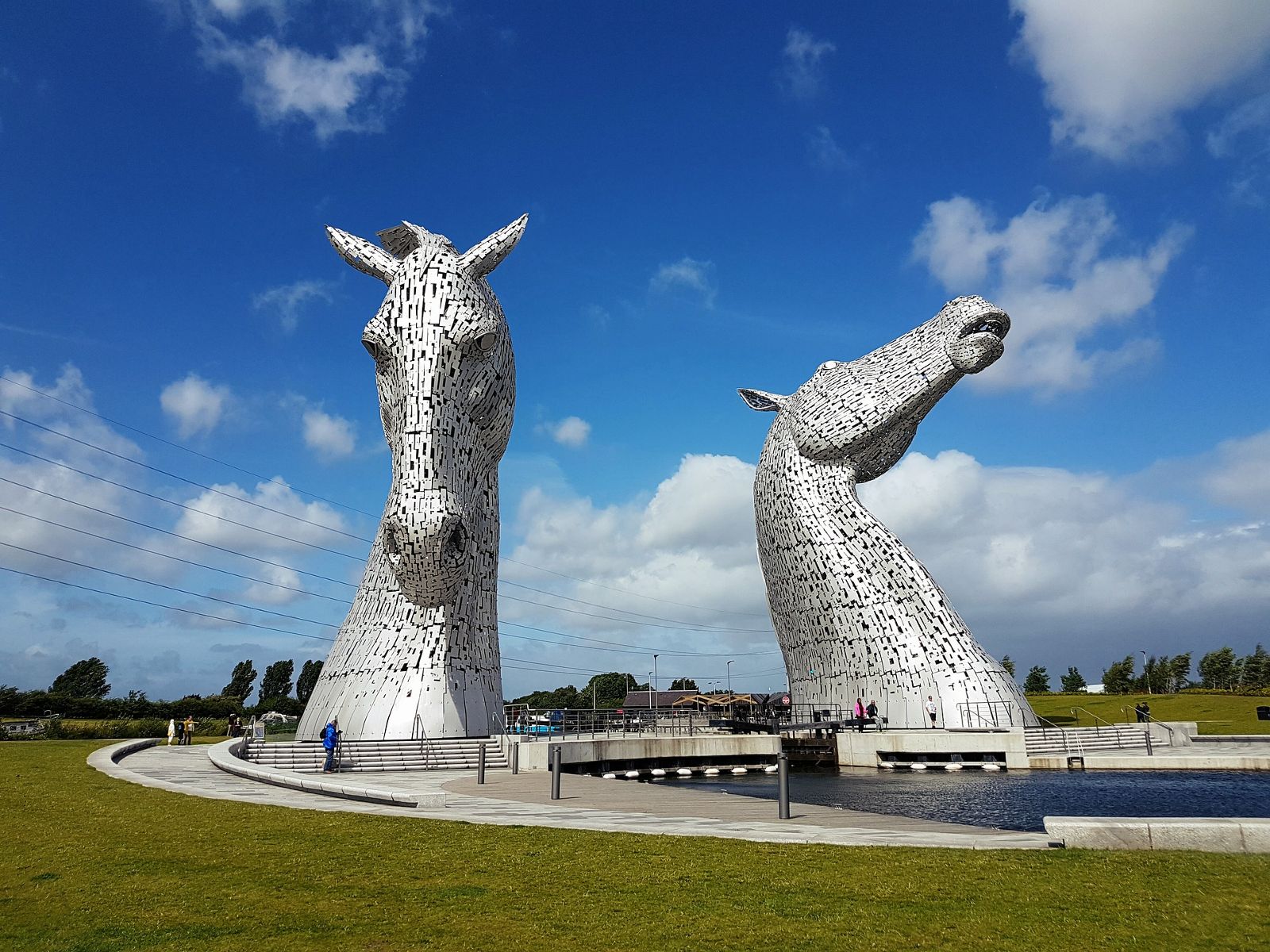The Wulver
This is a form of werewolf that stalks the lands of Shetland but unlike the common myth, this creature was never human. It has the body of a man but the head of a wolf, and is not seen as aggressive if left to his own devices. He will occasionally leave fish on the windowsills of the poor to ensure that people don’t starve too.
The Bean Nighe
The Bean Nighe is described as a form of banshee, but otherwise known as the washer woman. She can be spotted at the edge of isolated streams washing blood from the clothes of those about to die! The appearance of the Bean Nighe is normally that of a hag, however she can change her appearance to that of a beautiful woman if she so decides. Any living person can approach the washer woman, with a variety of outcomes possible, including being told the names of those soon to die.
Kelpies
Thanks to the wonderful sculpture at Falkirk Canal, more people than ever are aware of the Kelpies, though there are a few things you may not know. The Kelpies are shapeshifting water spirits commonly seen as a horse but it can also change its form into a human. Unlike the friendly looking sculpture though Kelpies will lead humans to their death; by luring them to the water and devouring them, hence why they are seen as demons…
If you want to play it safe and see the sculpture of The Kelpies, rather than risk an encounter with a real one, you can see them on our Loch Lomond, Stirling Castle and the Kelpies tour from Edinburgh. Or, our brand-new tour from Glasgow - The Kelpies, St Andrews and Fife Adventure!
There's so much to say about the Kelpies, we've given them their own blog. If you dare to learn more, have a read here!
Blue Men of the Minch
These creatures have the appearance of normal sized human men but are blue in colour. They are located in the Minch, which is the waterway between mainland Scotland and the Outer Hebrides, and have the ability to create storms and interact with humans. It is said that if a vessel comes into contact with them the Chief of the creatures will recite two lines of a poem. The master of the vessel who encounters them must complete the poem otherwise they will do their best to capsize the vessel and kill all inside.
Selkies
Probably the most gentle of the creatures on this list are the Selkies, they are seals that reside in the sea and shed their skin in order to take human form on land. They are said to be very attractive in their human form and have no trouble forging romantic relationships with humans. However, as their home is the sea it is not long until they make their return, unless a human is able to hide the skin they’ve shed, without this they cannot return home. A Selkie can have a husband/wife and have a family but if they are able to obtain their skin again they will immediately return to the sea.
The Loch Ness Monster
The most well-known of Scotland’s creatures, Nessie otherwise known as the Loch Ness monster. After the reported sighting and photographic evidence (though later revealed as hoax) of the monster in 1934 people have done their best to catch a glimpse of the creature. Let us know if you spot her when you’re on tour! Any of our Loch Ness tours will give you a chance to give her a wave, such as our daily Loch Ness tours from Edinburgh, Glasgow and Inverness. To learn a wee bit more about this tour, have a read of this article at travelmag.com!
Be sure to keep your eyes peeled when you are at Loch Ness on one of our tours as apparently there's a pretty hefty reward if you find Nessie!
Redcap
A bit of mythology from further south in Scotland, you might hear about Redcaps around the Scottish Borders or in the north of England.
These nasty wee guys are said to inhabit abandoned castles in the borders area, and should anyone trespass on their land, they might end up meeting a sticky end at the hand of the Redcaps. Unfortunately, the kill trespassers and use their blood to dye their caps red, hence the name. If the cap dries out, the Redcap will die, so they need to kill pretty often. So, if you see an abandoned castle, stay away from it. Luckily the only castle we visit down in that area is Alnwick Castle on our Holy Island, Alnwick Castle and the Kingdom of Northumbria tour from Edinburgh. It is also very much occupied, and not by Redcaps, so you should be safe.
Caoineag
Similar to a Banshee that you might have heard of, or the Bean Nighe mentioned above, the Caoineag is another form of weeping spirit said to be found here in Scotland, with her name literally meaning "weeper" in Scottish Gaelic. She is said to signify death, and whilst normally invisible, will appear by the sides of lochs, glens or waterfalls, wailing. Unlike the Bean Nighe mentioned above, she cannot be approached. Thank goodness.




